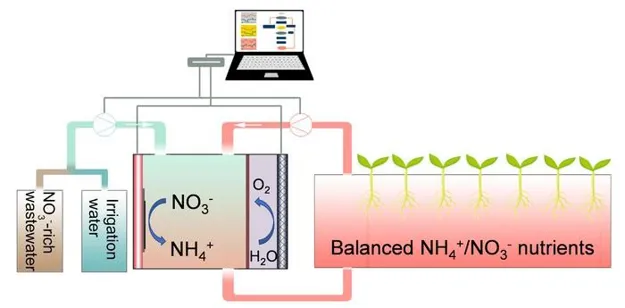A new farming system developed by researchers at the University of Texas at Austin aims to solve one of the biggest problems in modern agriculture: the overuse of fertilizers to improve crop yields and the resulting chemical runoff that pollutes the world’s air and water.
The smart farming system uses a copper-based hydrogel that captures excess nitrate waste from fertilizer runoff and transforms it into ammonia – a critical element in fertilizers – that can then be reused. In tests, the system had the ability to match or increase crop yields over traditional methods while also minimizing environmental impacts.

“We designed this system and showed that it can grow the same or more crops without overusing nitrogen, which can contaminate groundwater and lead to harmful greenhouse gasses,” said Guihua Yu, a professor of materials science in the Cockrell School of Engineering’s Walker Department of Mechanical Engineering and Texas Materials Institute. The smart farming system (SSFS) produced wheat and rice plants that grew taller with bigger leaves, compared with other methods, with less nitrogen runoff.
The study, published in the Proceedings of the National Academy of Sciences, shows that the copper-based gel film not only produces ammonia from nitrate waste but also senses nitrogen levels in the soil. This detection capability helps determine the optimal time to drain nitrate, a nitrogen compound that is important for plant growth but can be a pollutant from the soil to convert to ammonia, keeping it from escaping and contaminating the surrounding environment.
Read more at eurekalert.org
